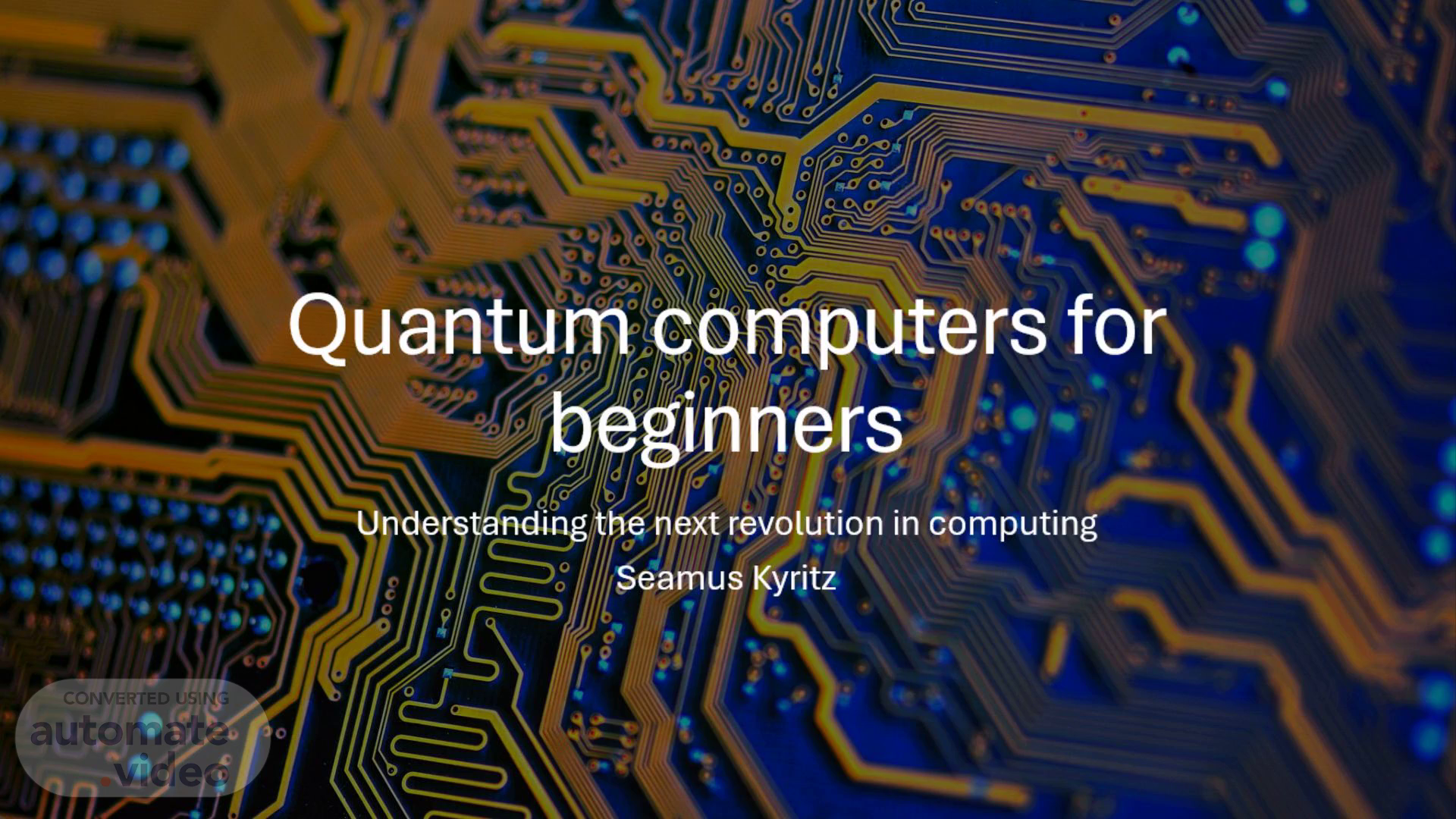Scene 1 (0s)
[Audio] Hello everyone! My name is Seamus Kyritz, and today I'll be introducing you to one of the most fascinating technologies shaping our future — quantum computers. Don't worry if you've never heard of them before. My goal is to give you a simple, beginner-friendly overview of what they are, how they work, and why they matter — especially for students in stem..
Scene 2 (23s)
[Audio] So, what exactly is a quantum computer? A quantum computer is a type of machine that uses the principles of quantum mechanics — the science of how particles behave at the smallest scales — to process information. Traditional computers use bits, which can be either a 0 or a 1. Quantum computers, on the other hand, use qubits — short for quantum bits. The big difference is that qubits can exist as both 0 and 1 at the same time. This means quantum computers can explore many possible solutions simultaneously instead of one at a time like normal computers do..
Scene 3 (1m 0s)
[Audio] Let's look a little closer at how quantum computers actually work. The first key concept is superposition. This means a qubit can represent both 0 and 1 at once — like flipping a coin that's spinning in midair, showing both heads and tails at the same time. The second concept is entanglement. When qubits become entangled, changing one instantly affects the other, even if they're far apart. This allows quantum computers to perform operations that connect multiple qubits together in powerful ways. Finally, we have quantum gates, which are the building blocks of quantum algorithms. These gates manipulate qubits to find the right answer among millions of possibilities..
Scene 4 (1m 46s)
[Audio] Now, why does all this matter? Quantum computers have the potential to solve problems that are practically impossible for even the fastest supercomputers today. They could revolutionize medicine by simulating complex molecules to design new drugs, transform cybersecurity by creating new types of encryption, and optimize logistics like traffic or supply chains. Companies such as IBM, Google, and NASA are already working on these technologies, and governments are investing billions into quantum research..
Scene 5 (2m 20s)
[Audio] So, why should we — especially STEM students — care about this? Because quantum computing combines computer science, physics, mathematics, and engineering all in one field. Students who understand this technology early will be at the forefront of the next wave of innovation — building faster algorithms, developing secure systems, and applying quantum principles to real-world challenges. Even if you're not majoring in physics or computer science, understanding the basics of quantum computing can help you stand out in research, data science, and tech-driven careers..
Scene 6 (3m 0s)
[Audio] Before I wrap up, here are a few trusted sources for learning more: IBM Think Blog – great beginner explanations of quantum computing. NIST – explains how quantum computing works and its implications. NASA Science – provides clear visuals and explanations of quantum entanglement. Thank you so much for listening! I hope this talk sparked your curiosity about the incredible world of quantum computing..
